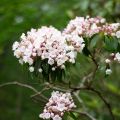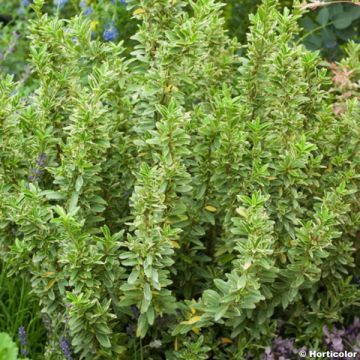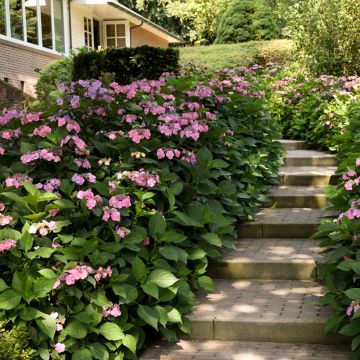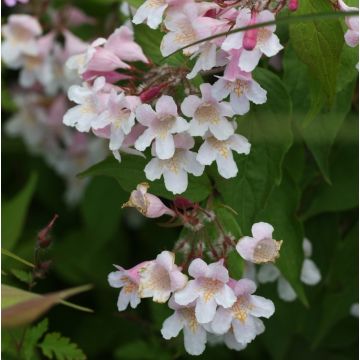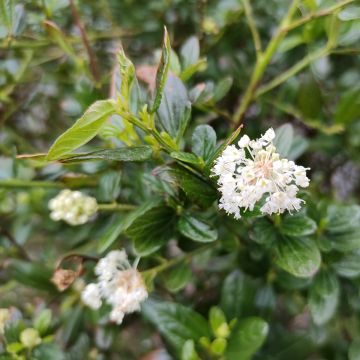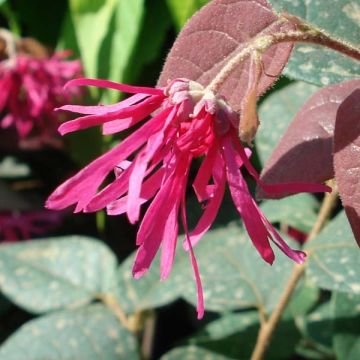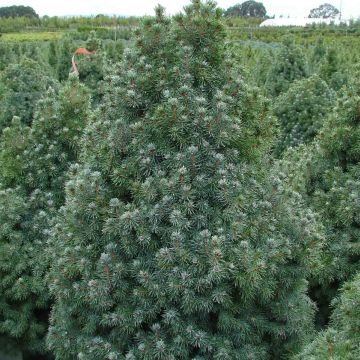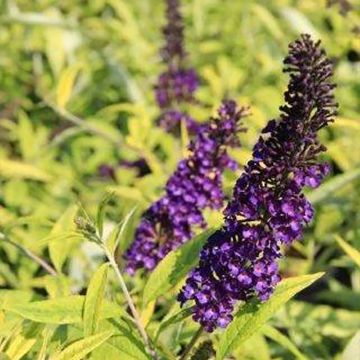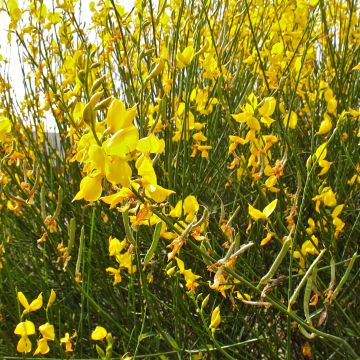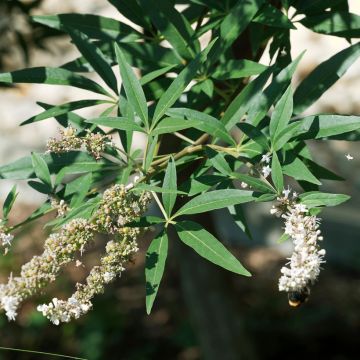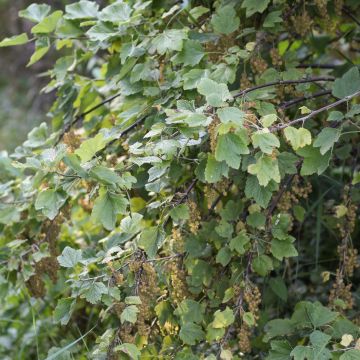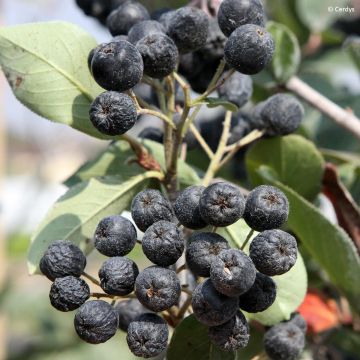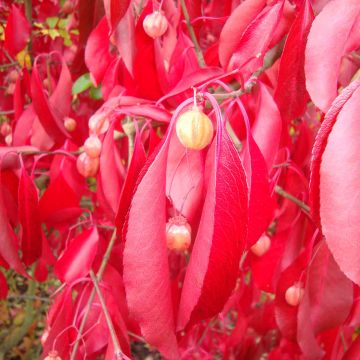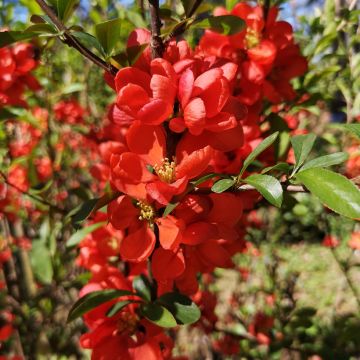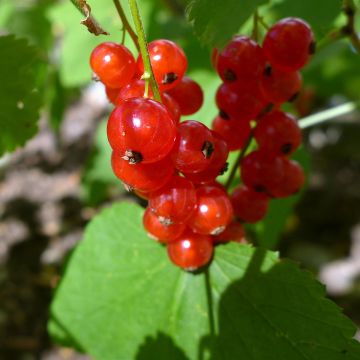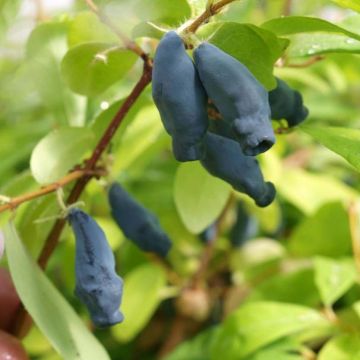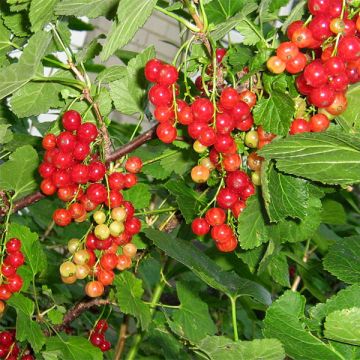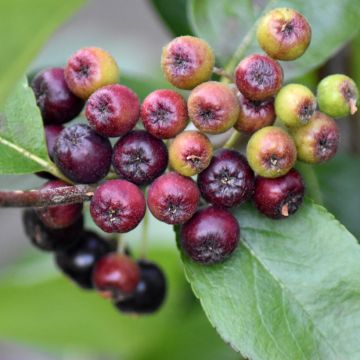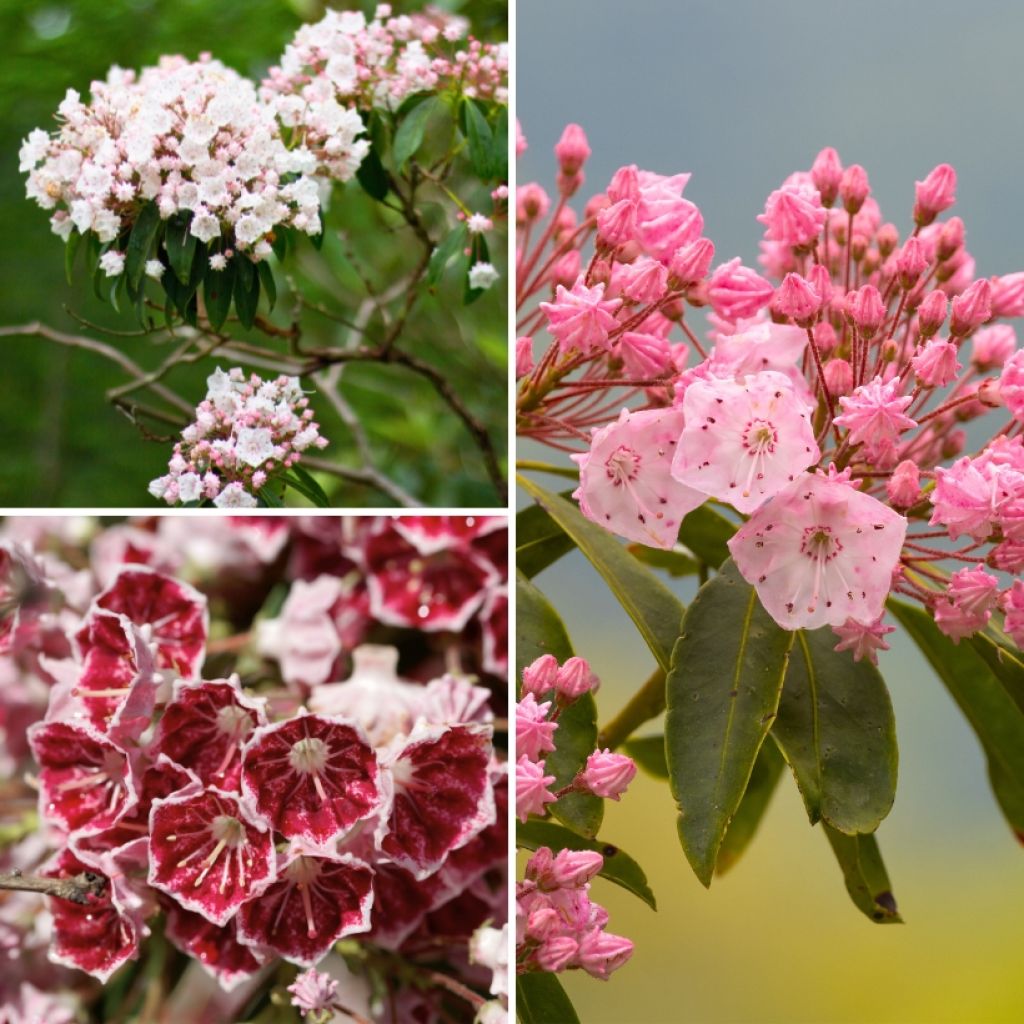

Mountain-laurels Collection - Kalmia
Mountain-laurels Collection - Kalmia
Kalmia latifolia Olympic Fire, Pinwheel
Mountain Laurel, Calico Bush, Spoonwood, American Mountain Laurel, Broad-leaved Kalmia
This plant carries a 24 months recovery warranty
More information
We guarantee the quality of our plants for a full growing cycle, and will replace at our expense any plant that fails to recover under normal climatic and planting conditions.
From €5.90 for pickup delivery and €6.90 for home delivery
Express home delivery from €8.90.
Does this plant fit my garden?
Set up your Plantfit profile →
Collection items (3 plants)
Description
This collection of Kalmias, or mountain laurels, brings together the varieties 'Olympic Fire', 'Pinwheel', and the species Kalmia latifolia with pale pink flowers. These evergreen shrubs for ericaceous soil, with dark green leathery foliage, are distinguished by their generous flowering. A colourful and spectacular flowering that illuminates cool and semi-shaded areas for several weeks at the end of spring. Use these plants to create a massif or a small flowering hedge. Their compact size is perfect for container gardening on a balcony or terrace, as long as their potting soil is kept slightly moist.
The collection consists of:
1 Kalmia latifolia 'Olympic Fire': a compact variety, reaching about 1m in height and spread. Its bright pink flowers with a paler centre bloom in May-June, clustered in terminal clusters. Its dark green foliage remains decorative all year round.
1 Kalmia latifolia 'Pinwheel': a variety as compact as the previous one. Its pale pink flowers with a reddish-purple centre are edged with white. They appear in June.
1 Kalmia latifolia: larger than the other two, this shrub can reach about 2m in all directions under good conditions. It offers delicate flowers, very pale pink, from May to June.
Plant your Kalmias in spring or autumn, in a non-calcareous, well-drained soil that remains slightly moist even in summer. A mixture of ericaceous soil, leaf compost, and topsoil will be suitable. Choose a semi-shaded location to avoid the scorching sun from damaging their foliage. Respect a spacing of 80cm between each plant to allow for good air circulation and optimal growth.
The Kalmias pair perfectly with many plants and ericaceous shrubs. Plant a 'Polar Bear' Rhododendron with white flowers in the background to create a bright backdrop. In front of the Kalmias, plant the 'Purple Splendor' Azalea with vibrant magenta purple flowers. Add two or three clumps of 'Dryopteris erythrosora', with its coppery spring fronds, to enhance the evergreen foliage of the Kalmias. To lighten your massif and extend its flowering period, plant the Japanese Anemone 'September Charm' at the edge.
Report an error about the product description
Plant habit
Flowering
Foliage
Botanical data
Kalmia
latifolia
Olympic Fire, Pinwheel
Ericaceae
Mountain Laurel, Calico Bush, Spoonwood, American Mountain Laurel, Broad-leaved Kalmia
Cultivar or hybrid
Other Shrubs A to Z
Planting and care
The Kalmia latifolia can withstand very low temperatures, down to -20°C. It should be planted in a semi-shaded position, in a humus-bearing and fertile, acidic, moist (even wet) but well-drained soil. Avoid planting during periods of frost or extreme heat. Prepare a planting hole that is wide and deep enough (40 cm by 40 cm). Regular watering is necessary to keep the soil moist and fresh. Applying a mulch at the base can be beneficial to protect the fine and shallow roots. Every spring, loosen the soil around the base and top dress with compost, ericaceous soil, and pine bark. The Mountain Laurel can tolerate a sunny exposure, but it dreads scorching situations. It must be placed in such a way that it is shaded during the hottest hours of the day.
The Mountain Laurel thrives in cool and humid conditions, making it extremely vigorous in rainy climates. With its compact growth, it is well-suited for container cultivation on a patio or balcony. The risk of soil drying out is higher in pot cultivation, so a large container, along with a mulch to retain moisture, and increased monitoring of watering are essential. Apart from removing faded flowers, pruning of the Kalmia latifolia is almost unnecessary. However, it is possible to remove dead wood and perform a very light trimming to maintain a balanced habit.
Planting period
Intended location
Care
This item has not been reviewed yet - be the first to leave a review about it.
Hedge shrubs
Haven't found what you were looking for?
Hardiness is the lowest winter temperature a plant can endure without suffering serious damage or even dying. However, hardiness is affected by location (a sheltered area, such as a patio), protection (winter cover) and soil type (hardiness is improved by well-drained soil).

Photo Sharing Terms & Conditions
In order to encourage gardeners to interact and share their experiences, Promesse de fleurs offers various media enabling content to be uploaded onto its Site - in particular via the ‘Photo sharing’ module.
The User agrees to refrain from:
- Posting any content that is illegal, prejudicial, insulting, racist, inciteful to hatred, revisionist, contrary to public decency, that infringes on privacy or on the privacy rights of third parties, in particular the publicity rights of persons and goods, intellectual property rights, or the right to privacy.
- Submitting content on behalf of a third party;
- Impersonate the identity of a third party and/or publish any personal information about a third party;
In general, the User undertakes to refrain from any unethical behaviour.
All Content (in particular text, comments, files, images, photos, videos, creative works, etc.), which may be subject to property or intellectual property rights, image or other private rights, shall remain the property of the User, subject to the limited rights granted by the terms of the licence granted by Promesse de fleurs as stated below. Users are at liberty to publish or not to publish such Content on the Site, notably via the ‘Photo Sharing’ facility, and accept that this Content shall be made public and freely accessible, notably on the Internet.
Users further acknowledge, undertake to have ,and guarantee that they hold all necessary rights and permissions to publish such material on the Site, in particular with regard to the legislation in force pertaining to any privacy, property, intellectual property, image, or contractual rights, or rights of any other nature. By publishing such Content on the Site, Users acknowledge accepting full liability as publishers of the Content within the meaning of the law, and grant Promesse de fleurs, free of charge, an inclusive, worldwide licence for the said Content for the entire duration of its publication, including all reproduction, representation, up/downloading, displaying, performing, transmission, and storage rights.
Users also grant permission for their name to be linked to the Content and accept that this link may not always be made available.
By engaging in posting material, Users consent to their Content becoming automatically accessible on the Internet, in particular on other sites and/or blogs and/or web pages of the Promesse de fleurs site, including in particular social pages and the Promesse de fleurs catalogue.
Users may secure the removal of entrusted content free of charge by issuing a simple request via our contact form.
The flowering period indicated on our website applies to countries and regions located in USDA zone 8 (France, the United Kingdom, Ireland, the Netherlands, etc.)
It will vary according to where you live:
- In zones 9 to 10 (Italy, Spain, Greece, etc.), flowering will occur about 2 to 4 weeks earlier.
- In zones 6 to 7 (Germany, Poland, Slovenia, and lower mountainous regions), flowering will be delayed by 2 to 3 weeks.
- In zone 5 (Central Europe, Scandinavia), blooming will be delayed by 3 to 5 weeks.
In temperate climates, pruning of spring-flowering shrubs (forsythia, spireas, etc.) should be done just after flowering.
Pruning of summer-flowering shrubs (Indian Lilac, Perovskia, etc.) can be done in winter or spring.
In cold regions as well as with frost-sensitive plants, avoid pruning too early when severe frosts may still occur.
The planting period indicated on our website applies to countries and regions located in USDA zone 8 (France, United Kingdom, Ireland, Netherlands).
It will vary according to where you live:
- In Mediterranean zones (Marseille, Madrid, Milan, etc.), autumn and winter are the best planting periods.
- In continental zones (Strasbourg, Munich, Vienna, etc.), delay planting by 2 to 3 weeks in spring and bring it forward by 2 to 4 weeks in autumn.
- In mountainous regions (the Alps, Pyrenees, Carpathians, etc.), it is best to plant in late spring (May-June) or late summer (August-September).
The harvesting period indicated on our website applies to countries and regions in USDA zone 8 (France, England, Ireland, the Netherlands).
In colder areas (Scandinavia, Poland, Austria...) fruit and vegetable harvests are likely to be delayed by 3-4 weeks.
In warmer areas (Italy, Spain, Greece, etc.), harvesting will probably take place earlier, depending on weather conditions.
The sowing periods indicated on our website apply to countries and regions within USDA Zone 8 (France, UK, Ireland, Netherlands).
In colder areas (Scandinavia, Poland, Austria...), delay any outdoor sowing by 3-4 weeks, or sow under glass.
In warmer climes (Italy, Spain, Greece, etc.), bring outdoor sowing forward by a few weeks.



































